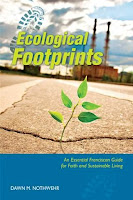
We are saddened by the loss of the blog's author, Sister Ruth Ann Nistler, 81, who died on July 20, 2013, at the Grand Itasca Hospital in Grand Rapids, Minn.
A Mass of Christian Burial will take place at St. Francis Convent on Wednesday, July 24, at 11 a.m. Friends may call at St. Francis Convent on Tuesday, July 23, from 4-8:30 p.m., with a Franciscan Prayer Service at 7 p.m., and from 8:30 a.m. until the time of the funeral on July 24. Arrangements are by Emblom Brenny Funeral Service, Little Falls.
Sister Ruth was born on March 9, 1932, in St. Cloud. She was the sixth of eight children born to the late George and Anna (Mahowald) Nistler. She was accepted as a Franciscan Sister of Little Falls, Minnesota, on July 31, 1951. She made her first profession of vows on August 12, 1953, and final vows on August 12, 1956. She was a Franciscan Sister for 61 years.
Sister Ruth was a person who loved to share her life and talents with other people. She had a deep love and admiration for the people she ministered to in South America and said that she received more from them than she was able to give to them. She had a great desire to reach the total self-giving, wholeness and holiness to which God called her. When she celebrated her golden jubilee she said, “In a way I feel that I have just begun. I look forward to the coming years as a continuing effort toward the life-long goal of becoming conformed to Christ.”
Sister Ruth received a bachelor’s degree in elementary education from the College of St. Catherine, St. Paul, Minn. and a master’s degree in religious education/pastoral ministry from Fordham University, New York. She also studied at the College of St. Scholastica, Duluth; the College of St. Benedict, St. Joseph, and the University of St. Thomas, St. Paul.
Sister Ruth ministered as an elementary teacher, foreign missionary, library assistant, pastoral minister, director of religious education, receptionist, music and liturgy coordinator, pastoral associate and Hispanic minister. She served in Waite Park, St. Cloud, Osakis, Little Falls and Princeton; Yunguyo, Peru; Maracay, Venezuela; Diboll, Tex.; Huntingdon, Tenn.
Sister Ruth was preceded in death by her siblings: Mary Daigle, Reverend Edward, Andrew and Sister Florence, OSF. Survivors include siblings: Catherine Radermacher, Wadena; Lucille Dockendorf, Hines; Theresa (Dale) Brummer, The Villages, Fla.; sister-in-law, Anna Nistler, Northome; nieces, nephews and her Franciscan Community.
Donations to Franciscan Sisters Ministries preferred.















